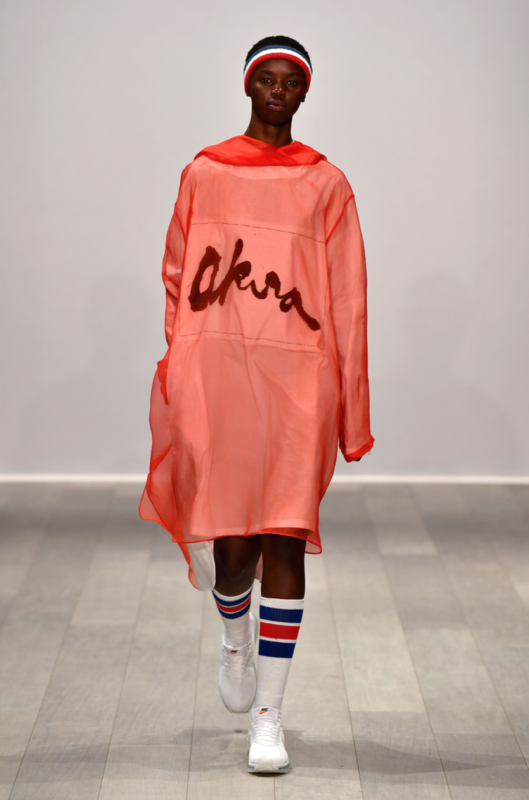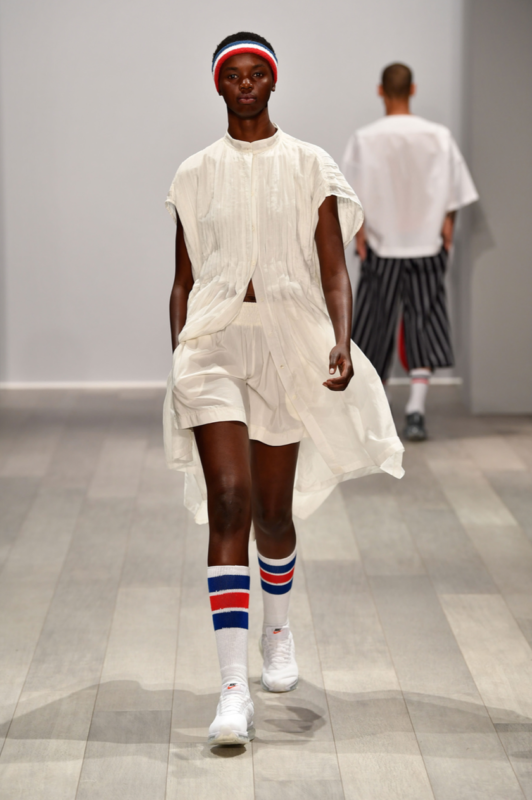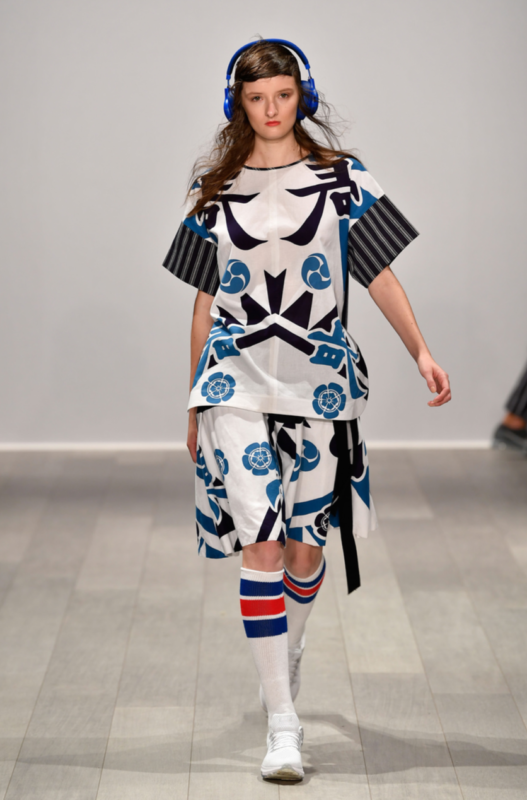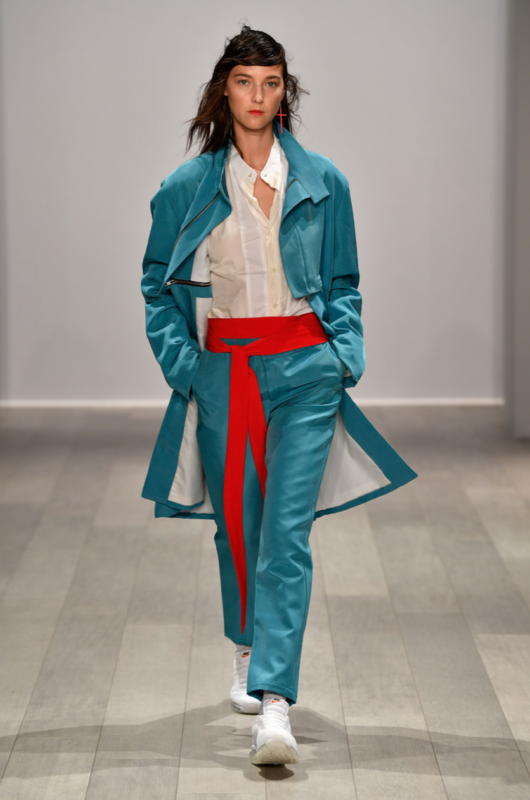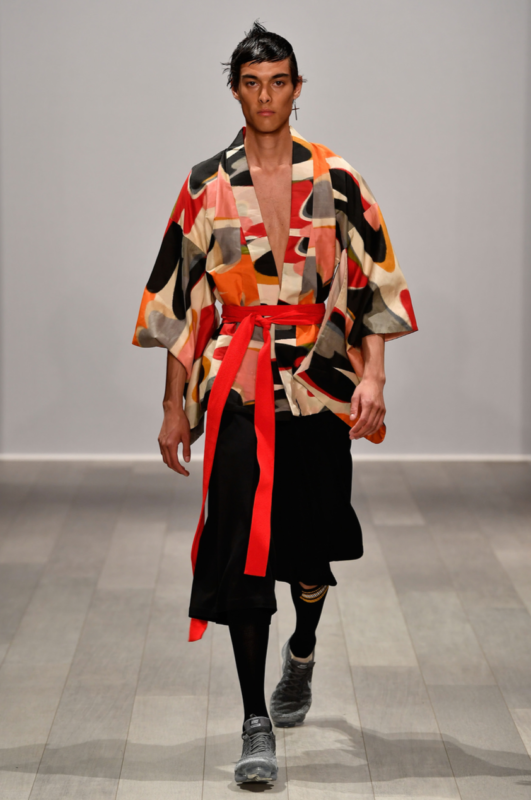Not one month ago I was walking the streets of Tokyo: finding my personal space in Shibuya square, tasting my first sea-urchin in a small hovel at the edge of the Tsukiji Fish Markets, and window shopping the world’s best designers along Shibuya’s Omotesando Street. All around Japan’s Capital City the Prada’s, Chanel’s, Vuitton’s and Gucci’s called to you from their architecturally blessed flagships that transported you into a fashion cloud of luxury goods. Whilst there is nothing like the feeling of running your hands over the highest quality silk, cashmere or leather that money can buy, what a culture chooses to wear in the streets speaks volumes about their true fashion identity.
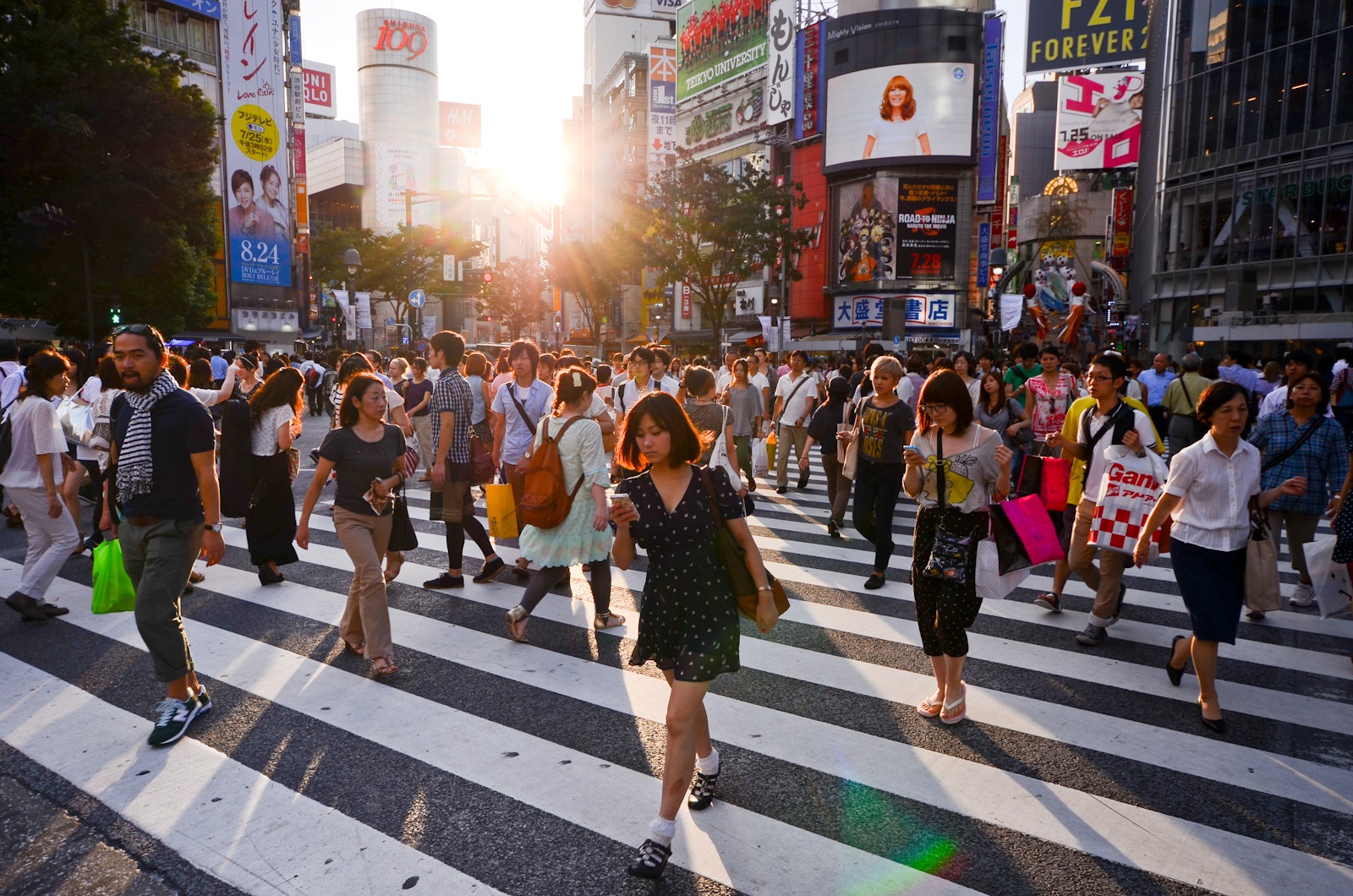
Naturally for a big City, there is a dichotomy at play between the conservative and the vibrant dresser, which feels similar to the rebellious Punk Movement that sprung up in Hipster London following the popularity of 1970s rock culture. But in Japan, I would argue the free-spirited fashionistas have a lot more in common with the ritualistic dress that spans from their rich heritage.
Allow me to digress, as a young fashion student yet to face the commercial realities of the market, we were encouraged to experiment and find our voice organically, even if that voice took us to places of outrageous proportions where models walked (or fell rather) on stilts and could barely move for the sake of the design. Ideas where often sacrificed for function until, finally, skills where honed to allow for both. The amazing thing about studying in a creative space, is that it was also a safe space where the ‘weird’ or ‘untried’ was embraced, and not only in the classroom. Students would walk the talk, fashioning themselves in oversized doona-come-vest pieces, shooting real bullets into a torn up shirt for authenticity or sporting taxidermy shoes by some of the brave peers or pioneers of the Fashion Design Studio.
In the streets of Harajuku, this sort of freedom of dress is more than just a sub-sect of the design-conscious (though it is also that), its spirited off-beat style forms the lifeblood for a fashion centre that is globally recognised and is uniquely Japanese. According to Travelchannel.com, the Harajuku Tribe were a group of fashion designers and their entourages who descended on the area after it was popularised as a place for foreign goods, specifically those brought in by the American’s who had occupied Harajuku as post-war allies. Fast forward through the 1964 Tokyo Olympics, which propelled global awareness of the local style to new heights and today you will find influencers gathering each Sunday, fashioned in their genre of interest and standing as if in performance for public viewing.
As the years evolve so too do the styles, with some abandoned, redressed or revisited with each new generation. From Cosplay, which involves the wearer to take on a character in popular culture, to the leather-wearing chain fastening Punk followers; the Gyaru, which are a cutesified version of an American teen to the Visual Kei, a scene which stemmed from Japanese music sporting androgynous tones and over the top hair and much, much more. Unfortunately, my own pilgrimage to see the famous fashion-set was marked by wet-weather and I saw little of either. I did press a photo upon a twin-set of Lolita girls, dressed in the classic cupcake skirt, petticoat and knee-high socks – a sort of twisted embodiment of the Victorian Period dress.

But outside the main action, what attracted me more was the local patrons, whose own personal take on the street style offered up not a subdued version, but rather a filtered translation of the genres, that was still impactful in terms of its colour, quirk and oddly it’s wearability. To a passer-by my request for a photo seemed strange (albeit graciously given), since she was not among the intended fashion folly. But just a stone throw from the main Takeshita-dori alleyway are some hidden gems: legitimate street-cred stores that perpetuate the district’s fashion-forward style. A mix of curated vintage, skate-friendly tattoo parlours, reworked and one-of-a-kind fashion hubs like DOG, famous amongst celebrities from Rhianna to Lady GaGa.
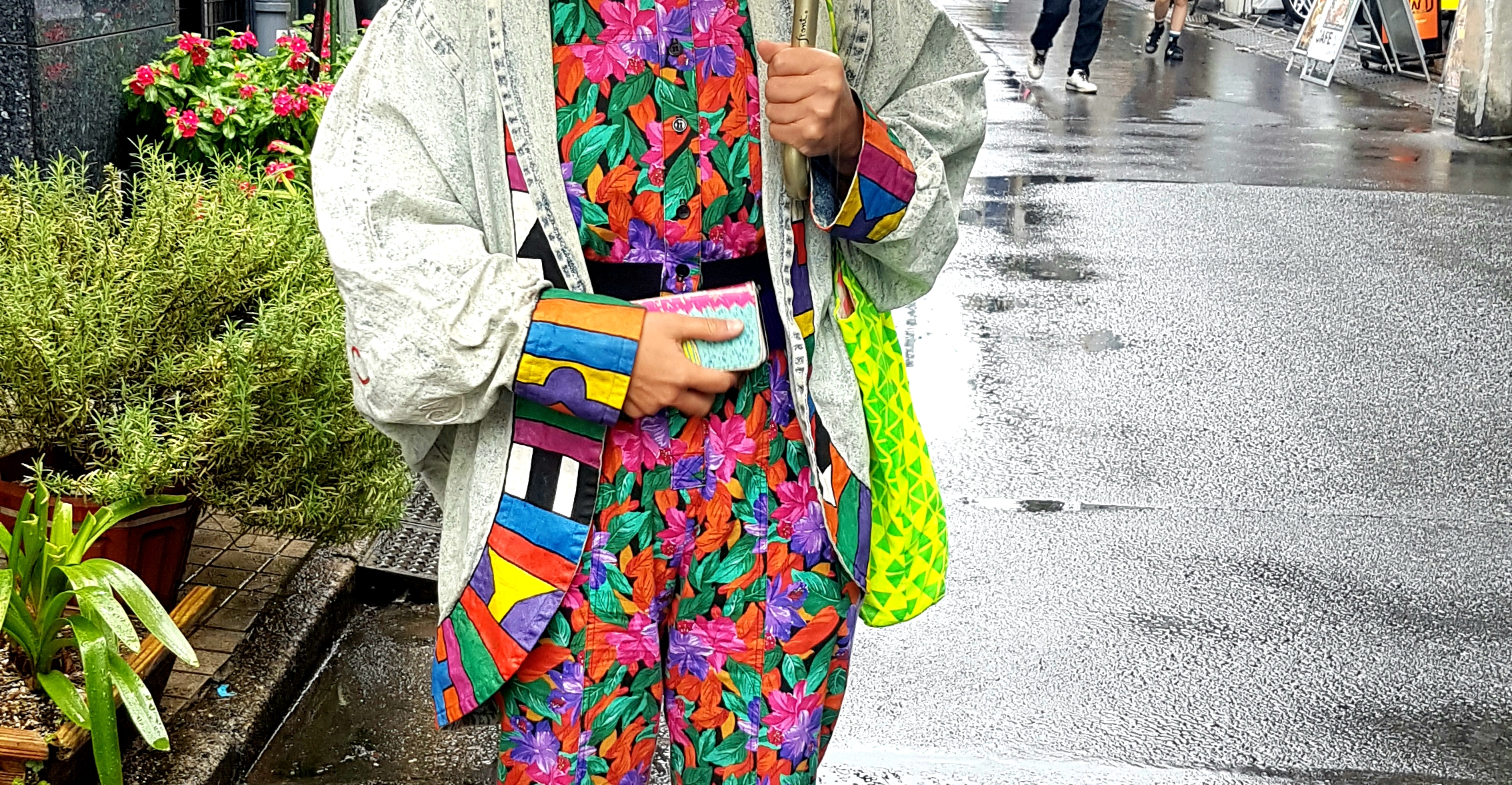
DOG can be found in the back street of Jingumae, huddled down some steep steps laden with the signatures of its famous patrons. It can be credited for launching a number of labels including MYOB (Mind Your Own Business) housing bespoke, one off hand-worked pieces, whether painted, stripped or studded like their famous leather jackets. Among the narrow aisles, you can really get a sense of the variety of styles available but they all have an overarching tone that promotes individuality.
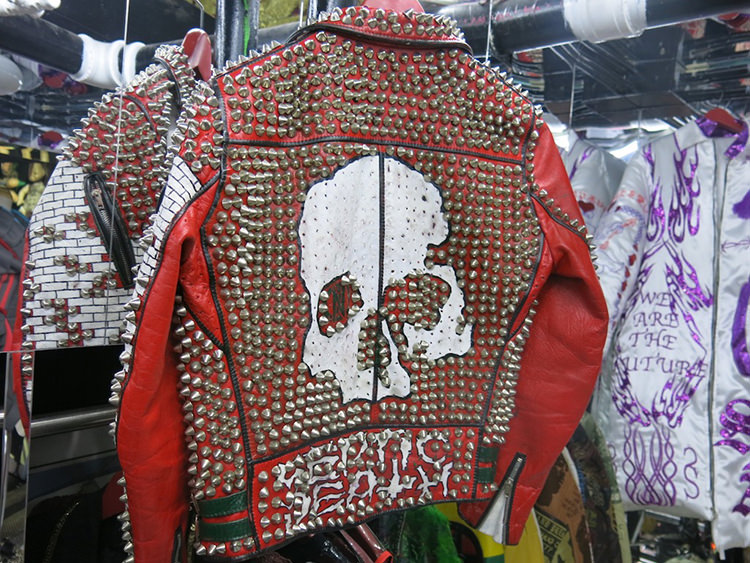
On the other side of the tracks to the bustling fashion hub you can find yourself in an unlikely ‘other world’, surrounded by a canopy of trees that lead up to the Meji Temple and Gardens. Going from the two extremes it is hard to believe that they sit nestled so closely together, yet it is here that my observations for traditional rituals and costume led me to conclude that the overtly dressed tribe across the bridge is not so different by comparison as they first appear. Japanese culture is rich in beautiful historical dress, best displayed by the beloved Geisha whom mastered the art of beauty and pleasure for the consumption of others. The Harajuku Girls, similarly dress to a function, for the love of a ritual which, is governed by modern ideas – yes, but indeed still forms a practice of performance rich in symbolism and cultural engagement.
Modern Japan, is far removed from its ancient past in a fashion sense, with traditional dress mainly donned for moments of tourism or religious ceremonies, there is little opportunity to dress in a ritualised way as was their custom. So the avant-garde and brightened street-style offers new opportunities to engage in the art of dressing that is locked in with the pride of their past. For those of us looking on we can take inspiration directly from the street or access pieces from Japanese designers who, whether directly or indirectly, have a sense of this heritage marked within their designs.
For Australians, we need not look further than home-grown acclaimed Japanese designer Akira Isogawa. His 2018 resort-wear at the Mercedes-Benz Fashion Week had clear references to his Japanese Heritage. The collection was a mix of relaxed silhouettes with his signature oddities, like this years’ inclusion of tennis sweat bands – a nod to the Japanese Hachimaki (a symbolic head bandana). Red frocks appeared alongside silky whites, textured bloom fabrications and redressed oriental fabrics featuring geisha-esque florals to kabuki-mask designs in his prints.
The spotlight on Asia is surely set to rise this year when Victoria’s Secret launch their world famous fashion extravaganza in Shanghai, China this November. The show which will feature greater diversity and the inclusion of new faces from the shows home country, will have an impact that will extend beyond its glittering runway, pulling countries like Japan into the vacuum that calls out for designers and trends of oriental influence. This can only be good news, not only for the greats we know and love in Issey Miyaki, Yohji Yamamoto, and KENZO (to name a few), but also for the newer labels and designers straight from the classroom – and if the Australian Fashion Students are anything to go by, Japan’s young talent is sure to set the world on fire.
Have you witnessed the fashion of Japan in the flesh? Tell us all about it below.

